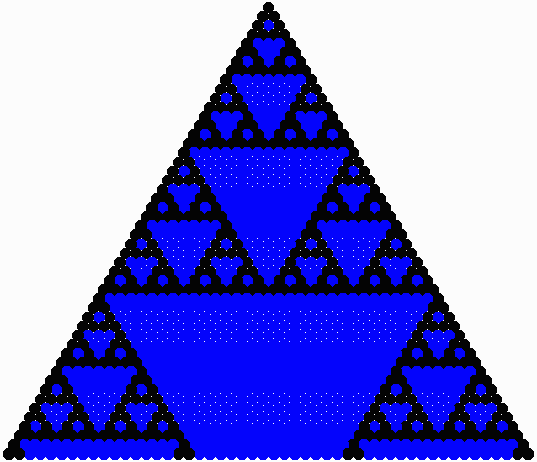
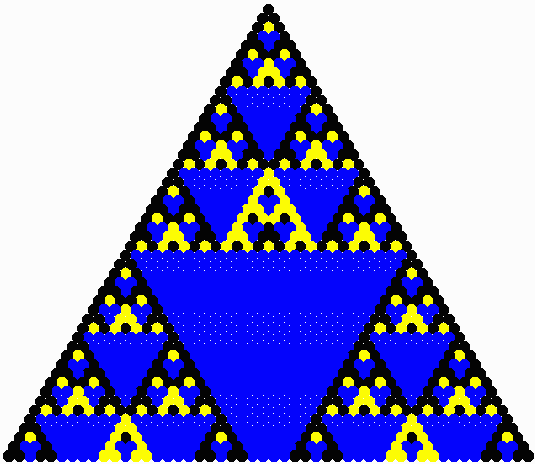

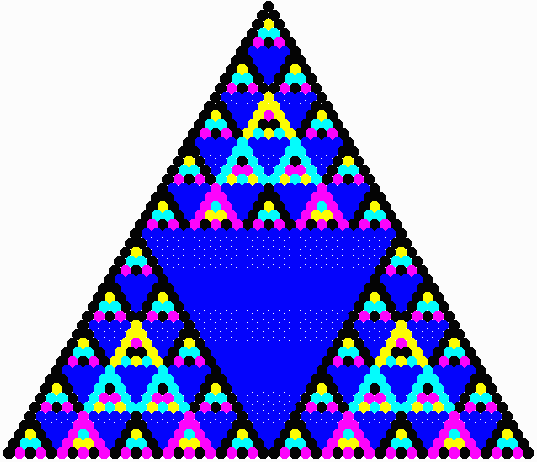
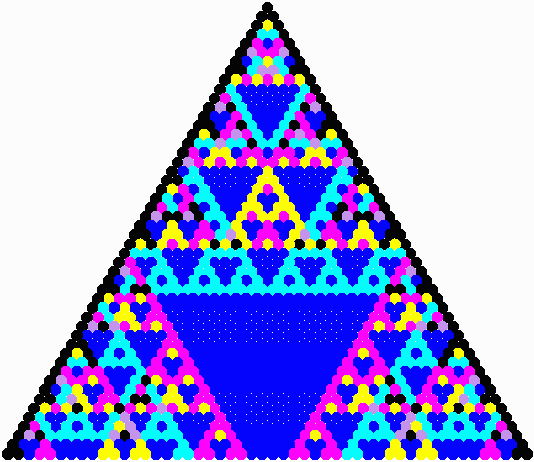
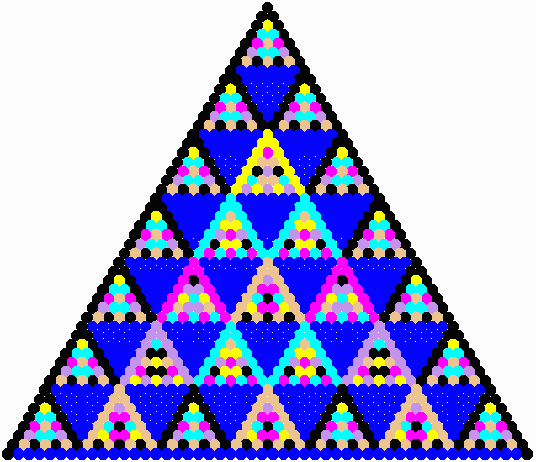
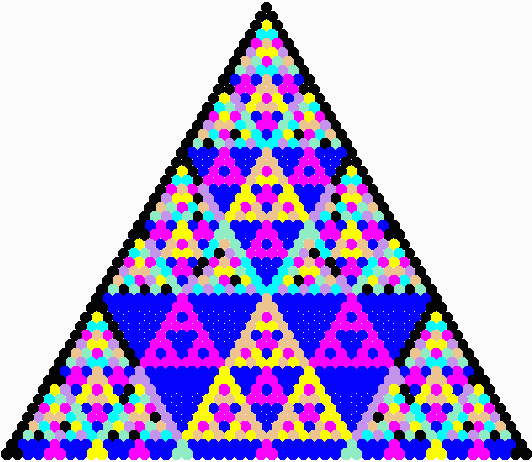
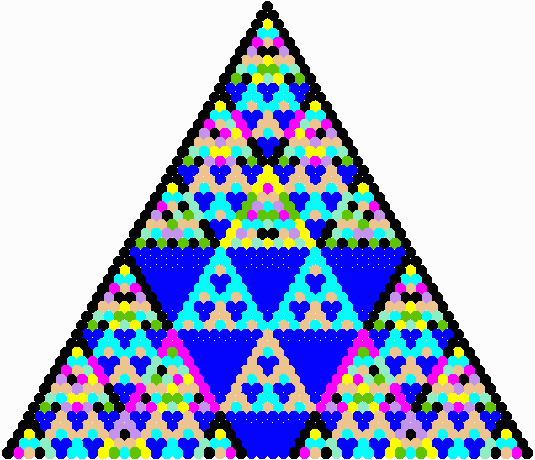

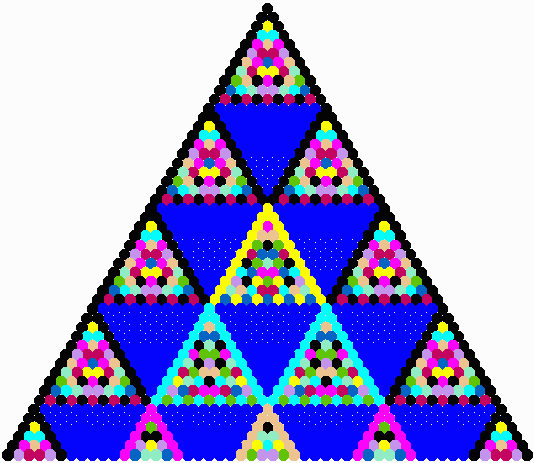
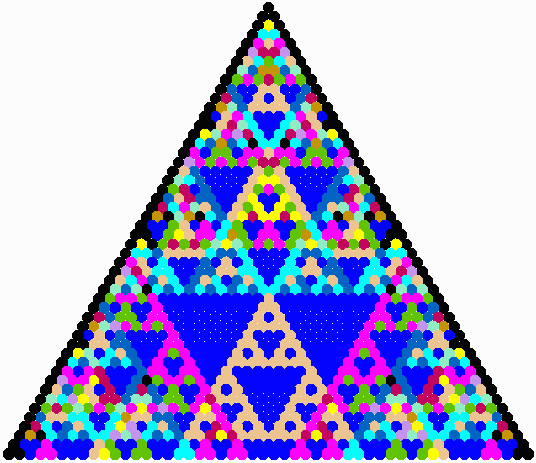

 |
 |
 |
 |
 |
 |
 |
 |
 |
 |
 |

|
 |
Now look at the n=6 triangle.
Can you see a color
identification that would transform it to the n=2 triangle? How about to the n=3 triangle?
Now look at the n=8 triangle. Can you make an identification that would transform it to the n=4 triangle? You could then make another identification to transform it to the n=2 triangle.
Can you see identifications between other triangles? What is the pattern here? |
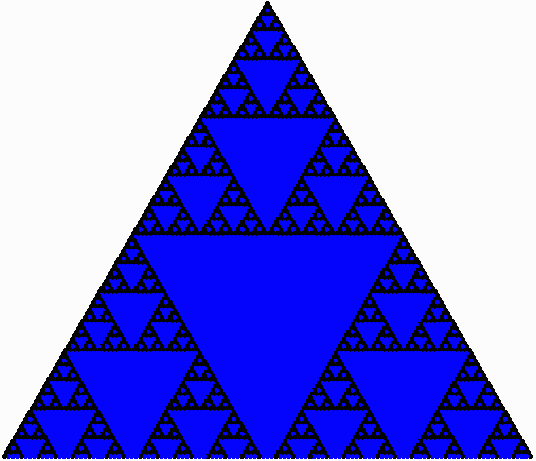 |
 |
 |
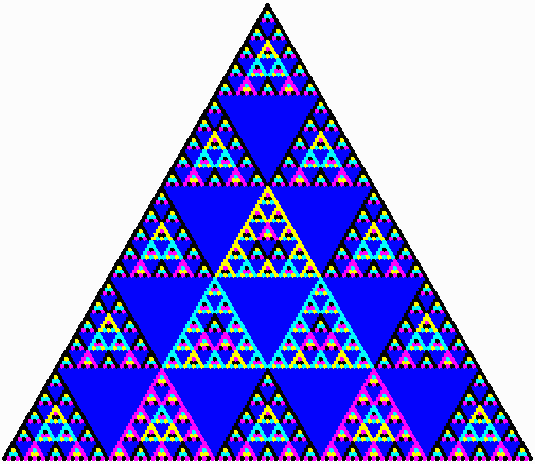 |
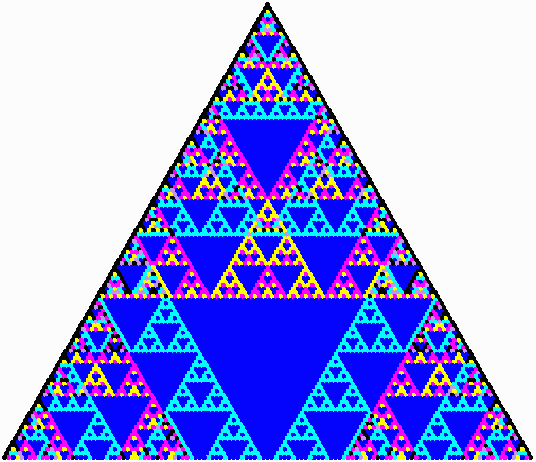 |
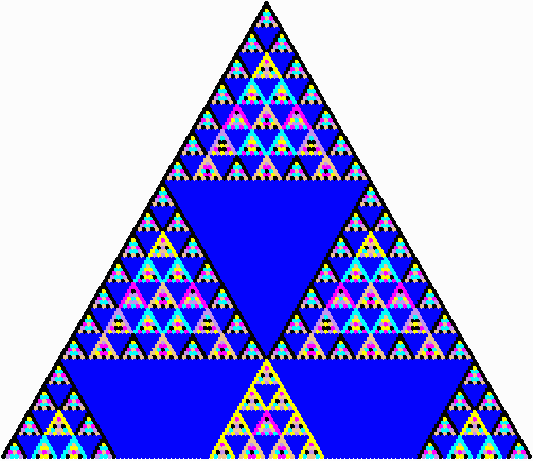 |
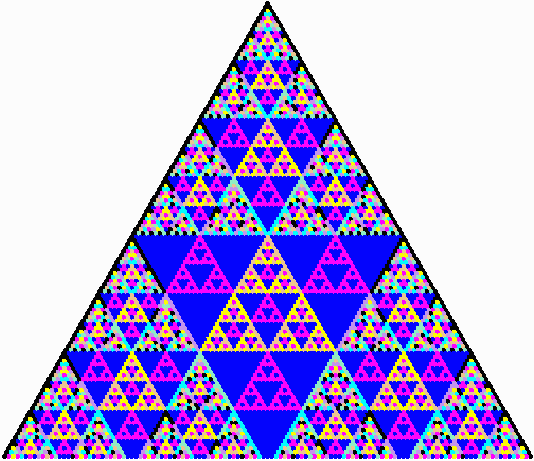 |
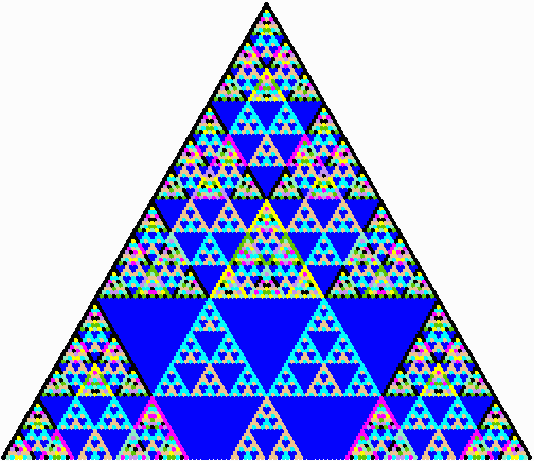 |
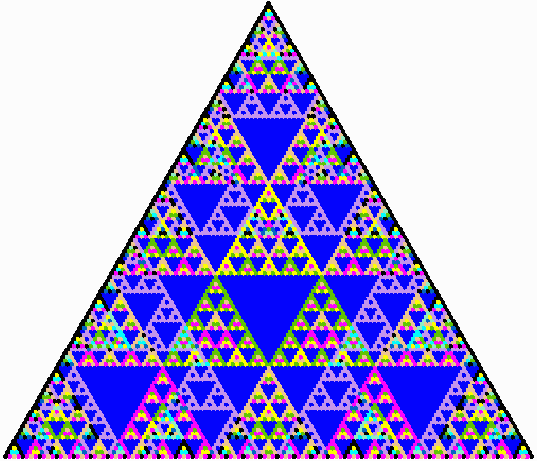 |
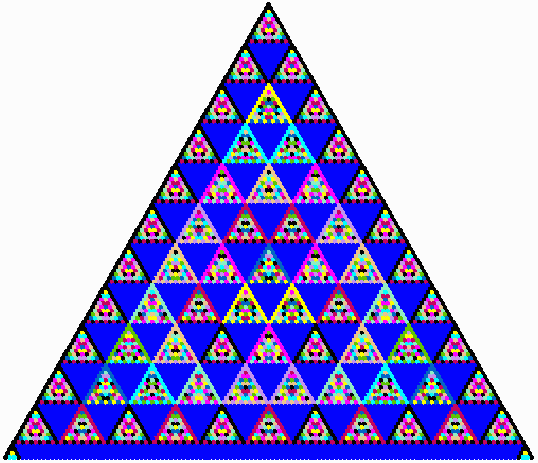 |
 |

|
One of the aspects of the patterns that is immediately noticeable is the existence of downward pointing royal blue triangles. Since in all of these triangles royal blue corresponds to the number zero, you can see that whenever you get a string of zeros on a row this will generate a downward pointing blue triangle. Any entry below two zeros will be zero. But the non-zero entries on either end of the string will encroach one position on each side for each row. Try it: start with a row {1,0,0,0,0,0,1} and generate rows below using the Pascal's triangle rule. You get:
1 |
|
0 |
|
0 |
|
0 |
|
0 |
|
0 |
|
1 |
|
1 |
|
0 |
|
0 |
|
0 |
|
0 |
|
1 |
|
|
|
1 |
|
0 |
|
0 |
|
0 |
|
1 |
|
|
|
|
|
1 |
|
0 |
|
0 |
|
1 |
|
|
|
|
|
|
|
1 |
|
0 |
|
1 |
|
|
|
|
|
|
|
|
|
1 |
|
1 |
|
|
|
|
|
|
|
|
|
|
|
2 |
|
|
|
|
|
|